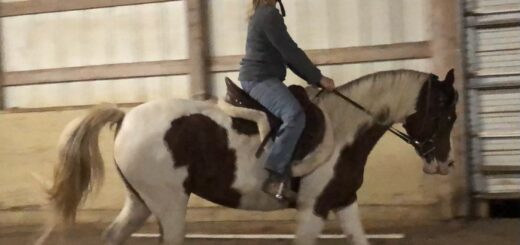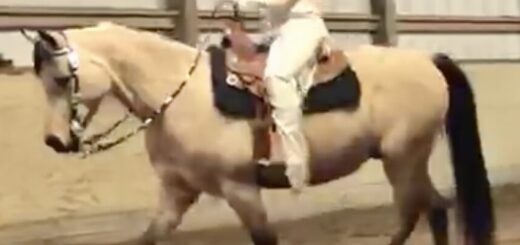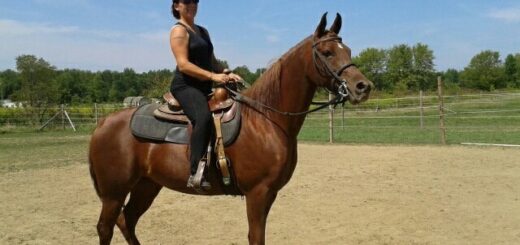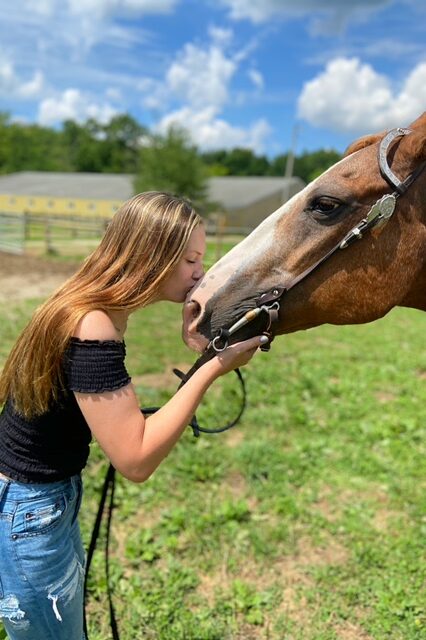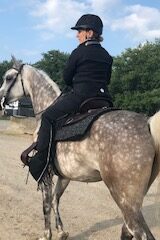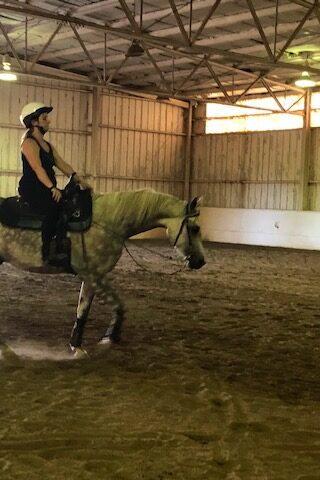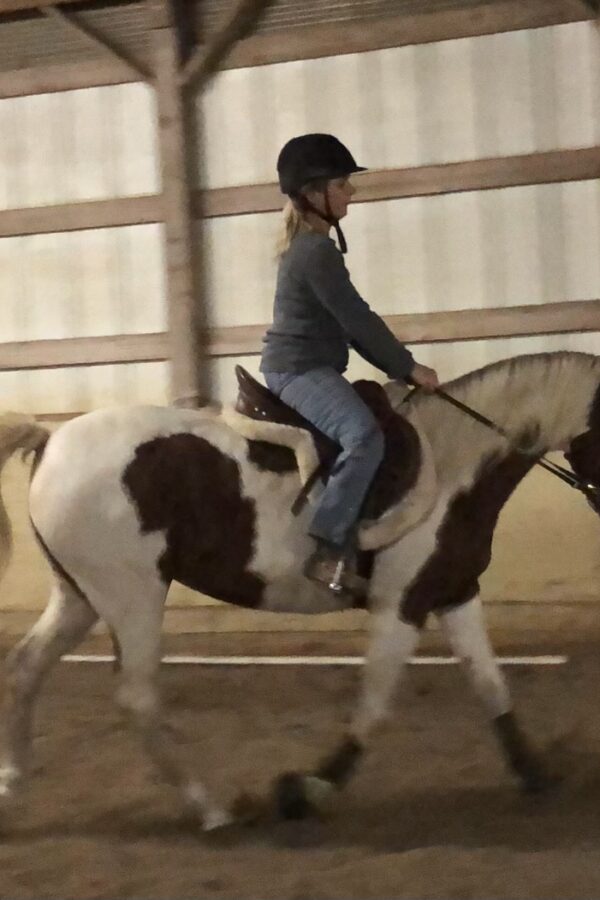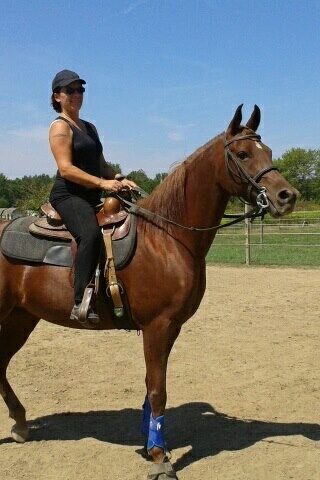The Free walk
Let’s talk about the free walk
The free walk is an essential maneuver in western dressage. Yet it is the gait that riders spend the least time working on. Although simple, we must remember that the walk has to show the same quality as every other gait and free walk is no exception. It has its own place on the judge’s sheet. In fact, it is a double coefficient. So, what are the judges looking for, and how do we accomplish a quality free walk?
Freedom of Gait
In the free walk, the horse is allowed complete freedom of the walking gait. The horse should look relaxed the head down, nose out, and neck stretched out. The horse’s back end and tail should swing, showing relaxation. That is an essential aspect of what a judge is looking for. The rhythm and tempo should be the same as the working walk. However, the stride is more ground covering. It is not faster but instead a longer stride. In some tests, the free walk is in a straight-line diagonal. Other times, the free walk can be on the rail. It can also be done in a half circle which is on some of the new tests. The challenge here is moving the horse straight or having the horse bend in the half circle using leg and seat aids. Your seat is balanced, and your hands are loose, allowing the reins to slide down and encouraging the horse’s nose to move down and forward. I like to bring my hands down toward my thighs. This shows the judge that my reins are loose and that I have no contact with my hands during the free walk.
How to Start the Free walk
How do you work on the free walk? First, realize your horse’s ability. Some horses don’t have a natural ability to lengthen a stride or stretch their neck out. Be aware of what your horse can and can’t do when you start working on the free walk. If your horse has a naturally short stride, practice moving him out within his ability. The stock horse will have a shorter length of stride than a thoroughbred. But if you keep working consistently on his stride, he will open his shoulders, stretch out and move more freely. On the other hand, if you have a hotter horse that is springier and has an overstride, you will need to work on collecting and slowing the stride without losing the length. Judges want to see riders who know their horses and can demonstrate a true partnership.
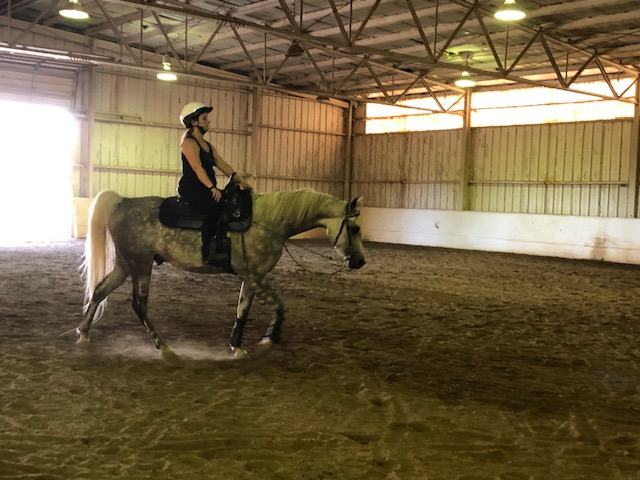
Relaxation
I often see riders cool their horses by loosening the reins and letting them walk. I like to start training in the free walk during cool-down time. The horse is relaxing. Their head lowers and drops as I let the reins loose and walk forward. However, I have worked with some horses that don’t drop their head, even during a cool down. To help a horse stretch his neck, I will rub both sides of his neck near the withers. This can help the horse relax and stretch out. You will have to see where the spot is on your horse’s neck that makes him want to put his head down and stretch. Now some horses don’t. I have one named Duke. Duke is a great horse, but he has a naturally high-set neck, so his head is always up. I have worked with Duke to relax, put his nose out, lengthen his stride and swing his hind end. If I can get him to do that much, he can get good scores. His nose is not on the ground like the horses, but he shows relaxation with his swing, and his nose is out more. He can also stretch his stride to cover more ground. Bingo! We have relaxation. Now we can fine-tune the free walk.
Fine Tune the Gait
Here is how I work on the free walk once I relax the horse. I pick up the reins slightly, then rerelease them giving the horse a place to go reaching the head forward and down. The goal is to connect the horse’s body and head. As the reins drop, the head goes out and down. Once I know the horse understands the loose rein, I work on the stride. I tend to squeeze my leg gently as the horse moves forward. As the horse’s right front leg moves, I squeeze slightly with my left leg and push my seat forward. If he moves faster, I pick up the rein blocking him. Like anything else, consistent practice is important. The most common issues in a horse are a tight back, chewing or holding the bit, or the horse holding his breath. If you have these issues, stop, and go back to relaxation. Common problems with the rider are not letting the reins out or not pushing the horse to lengthen strides. This can be relaxation and confidence issues with the rider. Take a mental check to see where you are in the process. Remember, there is no magic wand to get a great free walk. Every horse responds differently and has different abilities. It is up to you to know your horse, practice, and then show the judge how you and your horse work as a team riding your western dressage test.
Remember everyone to enjoy the ride!
Want to learn more? See my articles in the Horseman’s Corral.

